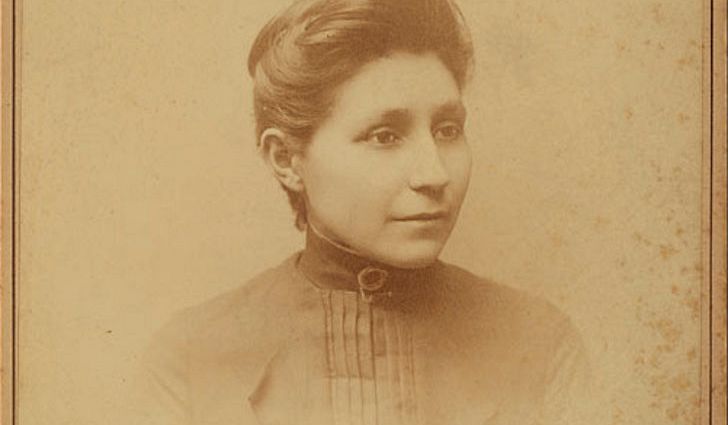National Women Physicians day is celebrated on February 3rd, coinciding with the birthday of Elizabeth Blackwell—the first female physician in the United States. This year I would like to tell you about Dr. Susan La Flesche Picotte, the first Native American women to earn a medical degree in the United States. She was the quintessential family physician, serving in limitless capacity for her people, the Omaha. Throughout her life, she focused on public health issues, ardently fought for Omaha land rights, wrote for her local newspaper, and never gave up the fight for social justice.
La Flesche’s motivation to pursue medicine came from a haunting experience she had as a child, watching an elderly woman die in agony awaiting the arrival of a local doctor. Despite being summoned four times, he never came. In her opinion, the doctor’s absence made one thing painfully clear: It was only an Indian. She wrote years later, “It has always been a desire of mine to study medicine ever since I was a small girl.”
Susan’s Father, Joseph LaFlesche, known as Iron Eye, served as the last Chief of the Omaha tribe. Iron Eye encouraged his children to become educated so they stayed true to their Omaha culture, yet understood both worlds. At 14, Susan moved halfway across the country to attend the Hampton Institute, in Virginia, where she graduated as salutatorian. Hampton graduates were expected to return to their reservations to become wives and mothers. Instead, LaFlesche applied and was accepted at the Woman’s Medical College of Pennsylvania.
Medical school was expensive, so LaFlesche appealed to the Connecticut Indian Association, who sponsored her medical school expenses, housing, books and other supplies. It should come as no surprise Dr. LaFlesche was valedictorian of her graduating class in 1889. Thereafter, she accepted the position of government physician at the Omaha Agency Indian School, a boarding school run by the Office of Indian Affairs, which had a government salary of $500.00 per year. While not obligated to care for the broader community, LaFlesche became the sole doctor for 1,244 patients spread across a massive 1,350 square mile area. Her office space in the corner of the schoolyard doubled as a community meeting place. She was widely trusted in the community as a doctor, but also served as their lawyer, accountant, pastor and political liaison.
La Flesche routinely put in 20-hour workdays making house calls by navigating her horse drawn buggy through terrain blanketed with snow and biting subzero winds while wrapped in a buffalo robe. When she returned home, “Dr. Sue” often found a line of wheezing and coughing patients awaiting her. At night, while sleeping, a lantern lit in her window served as a beacon for those sick with tuberculosis, influenza, cholera, dysentery, and diphtheria. In 1894, LaFlesche married Henry Picotte and they had two sons: Caryl and Pierre. Flouting convention, Picotte continued practicing medicine after the birth of her children and took them with her on house calls. Her most important crusade was against tuberculosis, which killed hundreds of Omaha, including her husband in 1905.
After being widowed, La Flesche’s role expanded to defender of Omaha land interests. She became outraged when the federal government reneged on the Omaha Allotment Act. She wrote letters to the Office of Indian Affairs and harshly critical newspaper articles continuing to work on her community’s behalf until the end of her life.
It was during a summer measles epidemic—during which the tribe lost 87 members, mostly children—that La Flesche began to dream about building a hospital on the Omaha reservation. A fundraising campaign generated enough private donations to build the hospital and even furnish many of the rooms. The Susan Picotte La Flesche Hospital in Walthill, Nebraska—completed in 1913—was the very first privately funded hospital built on a reservation in the United States. In 1993, it was declared a National Historic Landmark. In 2018, the hospital was named one of the top endangered places by the National Trust. A fundraising effort is currently underway to pay for restoration of this historically significant building.
It is difficult to determine whether Dr. La Flesche faced greater discrimination as a Native American or as a woman. La Flesche died in September 1915, four years before women were granted the right to vote and nine years before she could claim citizenship in the land where she was born and raised. Omaha means “against the current.” In her lifetime, Dr. La Flesche broke many gender, racial, and economic barriers, but more importantly, she straddled two completely different worlds successfully: Native and White, Omaha and Victorian, and motherhood and medicine. She was born in a tipi on the Nebraska plains, attended summer buffalo hunts with her family, and rode bareback across the reservation, by the time she became a physician, she had also lived in the big city, attended symphonies, and ridden in horse-drawn carriages on cobblestone streets. What I found most inspiring about Dr. Susan La Flesche was her tenacity. No matter the obstacle she faced, her spirit was never broken. May every one of us remain as resolute in our lifetime as Dr. La Flesche. To learn more about how Susan La Flesche overcame racial and gender inequality to become America’s first native physician, read “A Warrior of the People” by Joe Starita.
